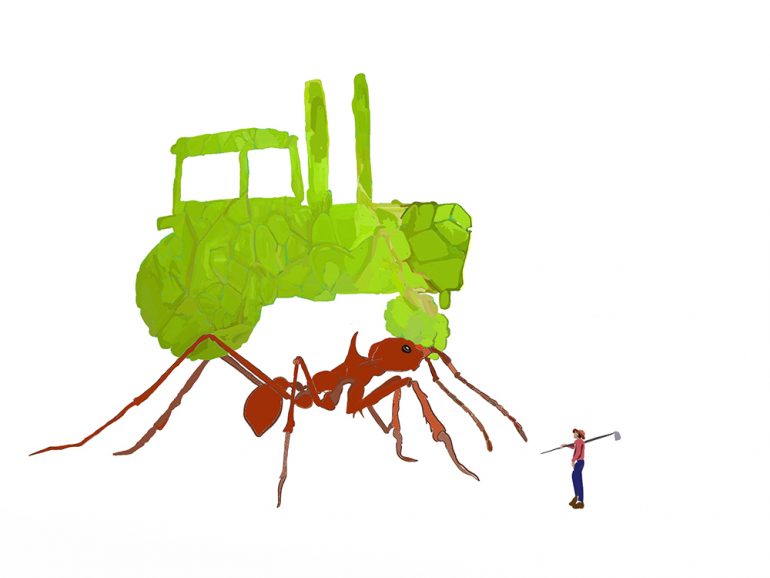“Go to the ant, thou sluggard; consider her ways, and be wise: Which having no guide, overseer, or ruler, Provideth her meat in the summer, and gathereth her food in the harvest.” Proverbs 6:6–6:8
Twelve thousand years ago, ancient human civilizations began to farm. In an era now called the Neolithic Revolution, groups of humans abandoned their nomadic lifestyles to begin farming; and over many years, transitioned from gathering plants to gardening to managing crops. Ancient civilizations were also using certain molds and plant extracts to treat infections long before antibiotics revolutionized the 20th century. Yes, humans have come a long way. But, when it comes to farming and medicine, humans are not the pioneers.
60 million years ago, long before humans evolved, a special ant in the rainforests of South America was beginning to farm fungus. Today, there are 250 known species that make up the “attine” group of ants, defined by the peculiar trait of fungus-farming. All fungus-farming ants evolved from one ancestor, but some ants farm a fungus that cannot exist without the ants. Thirty million years ago, these ants moved their pet fungus out of the wet rainforest and into a drier climate. To keep the fungus alive, they made gardens in underground climate controlled chambers. Underground, the fungus and ants relied on each other through millions of years of coevolution. The fungus eventually became a unique monoculture, totally dependent on its ant hosts. Researchers speculate that the dry climate allowed the ants to develop sophisticated chamber techniques, like digging deeper to control temperature, or bringing water from plants to maintain humidity. But ants face a problem any farmer does when raising monocultures: disease.
Monoculture is the agricultural practice of growing a single crop or breed at a time. Monoculture farming is a gamble—without genetic diversity, many of these crops are susceptible to disease. What happens if the crop your life depends on dies? For the attine ants, resorting to other farming techniques or food sources is not an option. However, these ants have not only survived—they’ve thrived! How?
Studies reveal other characters at play in the ant-fungus story of coevolution. The story includes a chemical arms race between the leafcutter ant and a co-evolved pathogen. The Escovopsis is a parasite that is specialized to grow in the ant garden. Left alone, Escovopsis would decimate an ant colony. Acromyrmex ants evolved several sophisticated defenses: antibiotics and microbial warfare. Ants are the only groups of insects that have metapleural glands, exocrine glands that secrete compounds that serve as powerful pesticides. They also use an antibiotic-producing bacteria, much like humans do with modern medicine. Escovopsis evolved defenses to evade the antibiotics, much like the multi-drug resistant superbugs that humans face. The ants are in a constant battle to keep this pernicious parasite at bay and to protect their monocultured fungus.
Today, humans face the consequences of monoculture practices and antibiotic overuse. The coevolution of ants, their fungus, and microbes, spans over millions of years. What can we learn from the humble ant? The details of their lives show the extent of specialized adaptation. Like humans, ants are social. Like humans, these ants use monocultures to sustain large societies. Like humans, this makes them vulnerable. And, like humans, these ants use a cache of chemical and microbial warfare to fend off disease. The leafcutter ants live in a complex system that traces the sequence of strategies over time, as their world of competing species evolved. Researchers are studying ants as a potential source of new antibiotics, and conversely, studying their pathogens as a source of insecticides to control invasive ant populations. What other lessons could humans learn from the ancient ant societies that still thrive?





